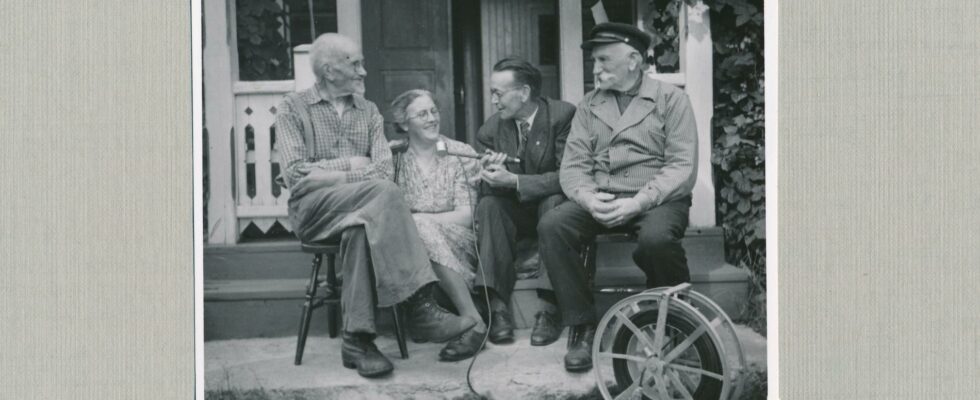unsaveSave
expand-left
full screen Dialect recording in Jämtland in 1948. At the time, no one thought that the recordings would become important for the technology of the future. Photo: Uppsala University
How can some guys from Halland make AI technology better?
When American speech-to-text models have to learn Swedish, old dialect recordings have proven to be a goldmine.
At the Institute for Language and Folklore (Isof) they have worked a lot with dialect collection, especially in the years 1935 to 1970, researchers went around the country and recorded how people spoke.
– The aim from the beginning was very much to preserve the traditional dialects, says Annette C Torensjö, head of the Department for Archives and Research in Uppsala at Isof.
The recordings were used for many years mainly by researchers, but last year KB-Labb at the Royal Library made contact. Leonora Vesterbacka is a senior data scientist and leads a project to train speech to text models, which “translate” speech into written text.
A small part of Swedish
American AI models are often trained on so-called massive multilingualism and then the Swedish part becomes very small.
– There is a model from Open AI called Whisper and it has been trained for 680,000 hours in lots of different languages, of which around 2,000 hours are Swedish. It is 0.3 percent Swedish, says Leonora Vesterbacka.
The models work well in national Swedish, but worse in dialects. This is where the old men from Halland, and others who have had their dialects recorded, come in.
– If someone had told me in the 1980s that the new gold will be an old weird roll of recordings in an archive, I would have thought they were joking.
Protocols and recordings from the Riksdag administration are also used.
– They are responsible for recording what is said in the Riksdag and then making it available and releasing minutes. It’s been a long time coming.
– In Sweden, we are so good at preserving everything. It’s cool to see that it can be used in the future as well.
Make available
When the models are fully trained, they can, for example, be used to transcribe medical records and meetings or write subtitles for television broadcasts. They can also be used to make spoken material, such as podcasts and government television broadcasts, available.
At Isof, they had not thought that their old dialect recordings would be an important step into the future.
– I am very satisfied that our dialect recordings really have such great relevance now, that this is something that you can actually work with as part of social development, says Annette C Torensjö.
FACT Dialects
A dialect is a language variant spoken by the inhabitants of a defined geographical area. It differs from the standard language as well as from neighboring dialects. The differences can apply to language features at all levels: phonological, morphological, lexical and syntactic level.
Sociolect, or social dialect, is a type of language that is distinctive for a certain social group. Sociolects are often regionally limited in terms of pronunciation, inflection and vocabulary, so that members of the same social class in different parts of a language area vary among themselves.
Source: ne.se
Read more
